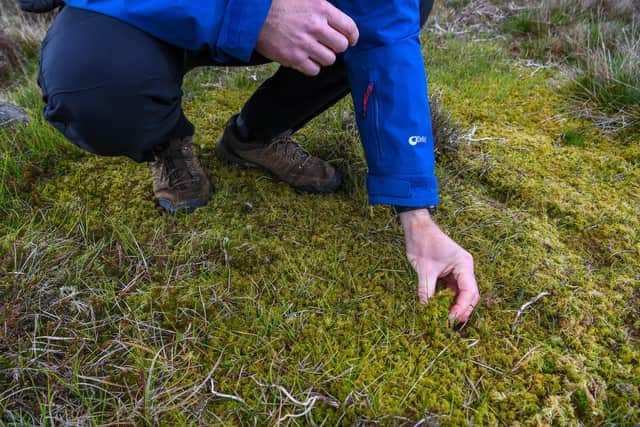The sooner we can restore peatland the better it will be for our environment - Betsy Glasgow-Vasey
These unique landscapes, characterised by their carbon-rich soils, are not just a much-loved part of our environment; they are essential in mitigating climate change, bolstering biodiversity, and improving water quality. But first, we must protect and restore them.
Over the past centuries, drainage, agriculture, forestry, and peat extraction have significantly degraded these fragile and important ecosystems. Peatlands are nature's carbon vaults, storing twice as much carbon as the world's forests. In a healthy bog, the waterlogged conditions prevent plant material from fully decomposing, trapping carbon in the ground. When healthy, they continue to accrue this organic material, eventually sequestering even more greenhouse gases.
Advertisement
Hide AdAdvertisement
Hide AdMost policymakers have only recently woken up to the dangers of neglecting peat. We must hope it is not too late: 80 per cent of UK peatlands have already been modified and drained. Drained and damaged peatland fields might take up as little as 0.4 per cent of the Earth’s land area but they emit as much as 5 per cent of carbon. In the UK alone, degraded peat emits more CO2 than all its trees can absorb. The sooner we can restore it, the quicker we will see an impact on our greenhouse gas emissions.


Back in Cumbria, Ridge Carbon Capture is restoring 450 hectares of degraded peatland, working with local communities, tenants and landowners to ensure the restoration reaches far into the future. Over the next 100 years, this project alone is estimated to abate tens of thousands of tonnes of CO2. In reality, these numbers are likely to be far higher as the ecosystem heals.
There are several other projects like this around the UK. However, the nation needs to significantly increase its peatland restoration efforts to reverse the damage that has already been done. Success for peatlands hinges on several crucial factors, namely leveraging public and private funding, securing supportive policies, investing in research and innovation and meaningful community engagement.
While the government provides some public funding for peatland restoration, it is simply not enough to meet the scale of the challenge. Despite the excellent work of programmes like Peatland Action in Scotland and the Nature For Climate Fund in England, the cost of restoring peat on a national scale is too prohibitive to be met by public funds alone. According to the Office for National Statistics, fully restoring the UK’s degraded peatlands could cost between £8bn-£22bn over the next 100 years. However, the benefits far outweigh the costs, with potential savings of £109bn in reduced carbon emissions.
Advertisement
Hide AdAdvertisement
Hide AdTo make it feasible, a combination of public and private sector funding is essential. Private sector funding can complement government investment, allowing for a more extensive and efficient restoration effort, including long-term monitoring and maintenance. Monitoring programmes are essential to track the impact of the work that is happening, as well as identify where more work is needed. Yet project-specific monitoring programmes are not currently eligible for public peatland programmes, placing the onus on private investment to provide long-term funding for measuring the success of each project.
We also need clear policies and incentives for landowners and tenants to encourage uptake of restoration activities. The Peatland Code has done great work in this regard. Developed by the International Union for the Conservation of Nature (IUCN) UK Peatland Program, the Code allows developers to quantify the climate benefit of their work and sell carbon units on the voluntary carbon market to UK-based businesses and individuals.
These beautiful landscapes also play an important role for the communities living alongside them. It is right that the value of these projects be shared financially and in-kind. Any project attempting to restore peat must be designed with the participation of local communities, with respect for those who steward these environments. In some communities, peatland restoration is a necessary intervention to alleviate the impact of flooding, as restored peatlands have greater flood resilience, protecting communities in at-risk catchment areas.
Education programmes are also critical to help communities buy into the need and benefits of renewing peatlands.
Advertisement
Hide AdAdvertisement
Hide AdRestoring peatlands is not just about preserving landscapes – it’s an inherent part of our strategy to reduce emissions. I’m heartened that the UK, and policymakers in Westminster especially, are becoming more aware of the benefits. Peat has been the foundation of healthy ecosystems for millennia. We ignore its benefits at our peril.
Betsy Glasgow-Vasey is MD of Ridge Carbon Capture.
Comment Guidelines
National World encourages reader discussion on our stories. User feedback, insights and back-and-forth exchanges add a rich layer of context to reporting. Please review our Community Guidelines before commenting.